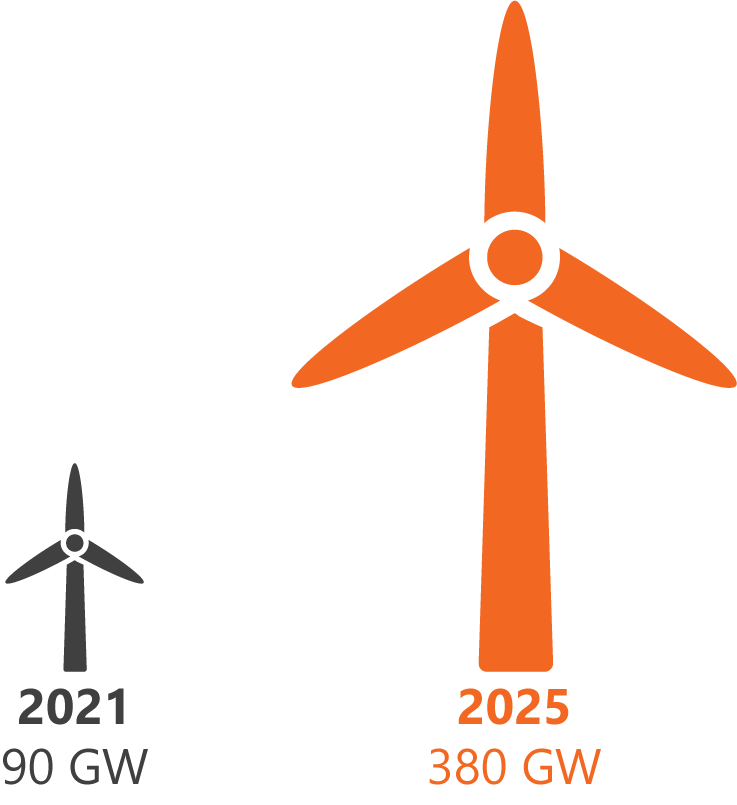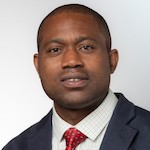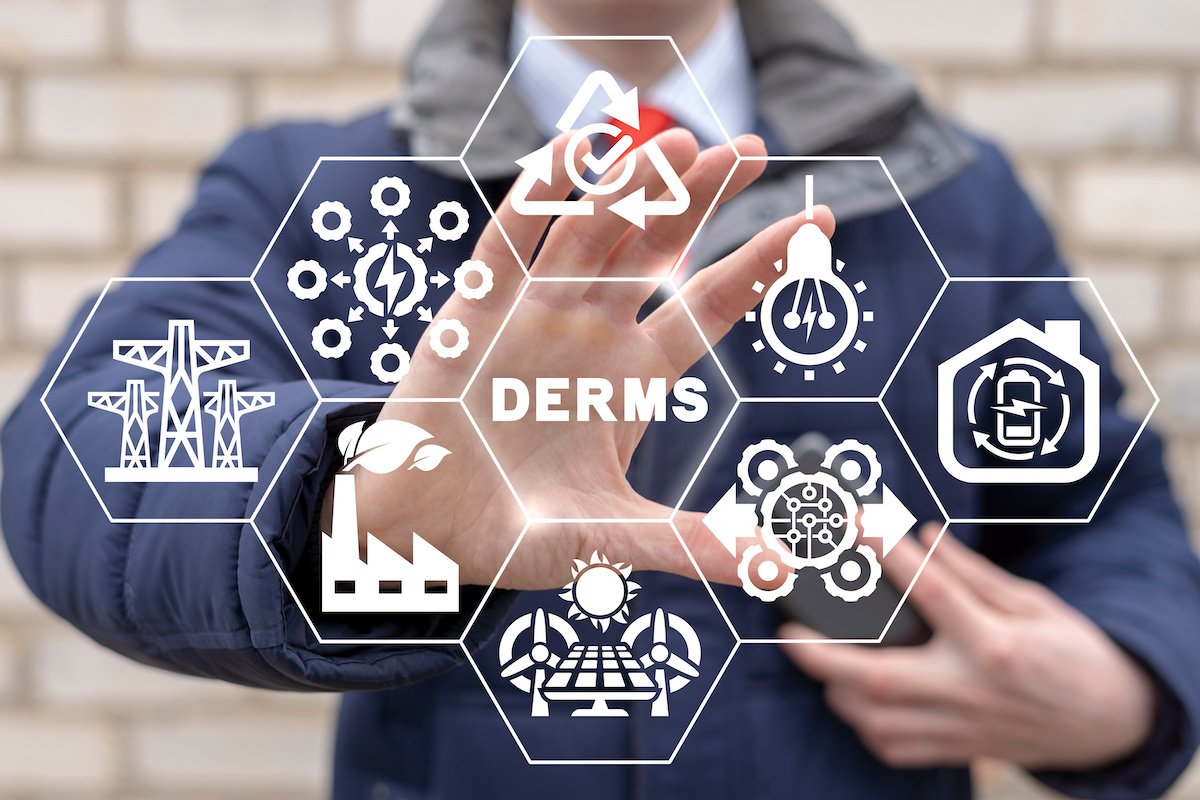8-minute read
Quick summary: We explore four starting steps to help utilities ensure optimized integration of a distributed energy resource management system (DERMS) with their existing data platforms. The proposed integration framework recognizes the impact this action could have on power and energy utilities. Thus we recommend having an agile mindset and creating adaptable platforms for proactive transformations and paradigm shifts across the themes of people, process, and technology.
As the demand for clean energy continues to escalate, driven in part by large utilities’ carbon neutrality goals and federal and state government incentives, we are seeing a surge in penetration of distributed energy resources (DERs) across the electric grid. These resources include photovoltaic (PV) solar panels, wind turbines, energy storage systems, and other assets that provide energy outside of the legacy power-plant system.
The U.S. Department of Energy predicts that DER deployment will grow from approximately 90 GW in 2021 to approximately 380 GW by 2025. This growth is poised to benefit utilities by increasing the availability of renewable energy and providing alternative sources to accommodate peak loads.
However, the fundamental challenge for utilities is integrating these variable resources with the possibility of introducing a bidirectional flow into legacy, monolithic grid operations built around one-way flows of data and electricity. To efficiently integrate, utilize, monitor, and control DERs, an effective DER management system (DERMS) is required. The global DERMS market was valued at $490 million in 2022 and is projected to grow to $1.86 billion by 2030.

The U.S. Department of Energy predicts that DER deployment and integration will grow from approximately 90 GW in 2021 to approximately 380 GW by 2025.
What is DERMS?
DERMS is a software solution designed to facilitate integration at scale by giving utilities the capability to monitor, control, and optimize DERs while maintaining safe, cost-effective, and reliable grid operations. Depending on locational characteristics within the grid architecture, DERMS can be classified as centralized, fleet, edge, or hybrid.
- A centralized DERMS is a grid-aware enterprise solution that can orchestrate the entire DER portfolio of a utility.
- An edge DERMS is a decentralized application used for grid-edge applications such as microgrid management and local electricity market systems. It also provides visibility into behind-the-meter DERs and their impacts on grid conditions.
- A fleet DERMS is used to manage a particular group of DERs, such as a fleet of electric vehicles.
To deliver fully on its potential, the DERMS must integrate with existing data sources and operational systems, including operational technology (OT) systems such as advanced distribution management systems (ADMS), advanced metering infrastructure (AMI), and supervisory control and data acquisition (SCADA).
Article continues below.
WEBINAR
Harnessing the power of DERMS: enhancing the grid’s flexibility and reliability
Why integrate DERMS with existing data ecosystems?
The electricity grid with its different domains was never designed to operate as a siloed infrastructure. As the grid continues to evolve through a combination of technological innovations, new regulatory regimes, and customer choices, a more integrated approach is needed across the entire value chain of the grid, including the data ecosystem.
The recent growth rate of DERMS deployment, which adds a new layer to data platforms, further calls for the development of frameworks to integrate DERMS data with the evolving ecosystem. Some of the potential benefits of this integration include:
Enhancing network reliability and resilience
Data-driven insights from integrated systems enhance grid management during off-normal and extreme weather events.
Improving decision making
With integrated data platforms, system operators can optimally dispatch and operate DERs with the holistic view provided by such integrated systems.
Driving innovation
Data integration can drive innovations in several aspects, such as granular, automated control of devices, in response to changing grid conditions and enable more accurate forecasting of energy demand and supply for proactive grid planning.
Improving stakeholder engagement
Integrated data ecosystems offer useful insights into customer behavior and preferences, which can provide flexibility to the power system.
The electricity grid was never designed to operate as a siloed infrastructure. As it evolves, a more integrated approach is needed across the entire value chain, including the data ecosystem.
DERMS implementation strategy
Implementing a DERMS can be a challenging task, and integrating it with existing data ecosystems even more so. As utilities move forward with their implementation roadmaps, issues such as lack of data, system incompatibility, security concerns, and shortages of the required technical expertise could delay or even derail their efforts.
Here are the four pivotal starting steps to ensure optimized integration of a DERMS with existing data platforms:
1. Conduct a current state assessment
Before embarking on the DERMS implementation journey, it’s important to gain a thorough understanding of the starting point, looking at factors such as existing legacy technologies, interfaces, and any plans to retire related solutions or implement new ones.
To ensure that product and implementation expectations are in line with the latest standards, it is important to spend some time gathering industry metrics and KPIs such as reliability metrics, including System Average Interruption Duration Index (SAIDI) and System Average Interruption Frequency Index (SAIFI).
Further, it is recommended to document technical functionalities of the DERMS product and develop architectural and data flow diagrams to create a visual representation of the data ecosystem into which the platform will be integrating. Utilities will also want to understand the full range of limitations, risks, and potential issues surrounding DERMS implementation and the challenges that can arise along the way.
2. Develop future-state requirements
Once a utility has assessed the starting point, it’s important to understand exactly what they want to achieve based on the data they’ve collected. When someone plans a vacation, the destination has a significant impact on how they prepare, and the same is true for the DERMS assessment journey.
Utilities are advised to take the time to understand and document their needs for a DERMS solution. This will drive the requirements-gathering process and the assessment of support that the solution will require in the future.
Anticipated growth of DERs within the utility’s footprint based on demographic trends, policy changes, regulatory actions, and number of applications being received, will determine the trajectory of DERMS implementation. This is also the point where the utility needs to determine whether they want to start with a pilot program and scale up later or opt for full deployment all at once.
3. Evaluate the architecture
Gathering the combination of the current and future state requirements will help a utility perform a gap analysis to determine the efforts needed to achieve the anticipated future state, such as architectural requirements. This is the most important step, as the utility needs to decide which technology, protocols, and components they will use for the DERMS implementation.
The technology a utility chooses must fulfill all current- and future-state requirements they discovered in the previous steps. Lastly, they will want to create an integration plan where all the technologies converge and work in tandem.
4. Develop the recommended solution
Once all research, assessments, and evaluations are complete, utilities have all the information they need to make a data-driven recommendation encompassing factors such as total cost of ownership, anticipated rate of return, and hosting decisions (on-premises versus cloud).
By this time, the utility should have completed detailed technical specifications and architectural diagrams. A roadmap will help them estimate the total cost of ownership over the life span of the DERMS solution. The total cost should include implementation and maintenance costs as well as future resiliency and security requirements and upgrades.
Challenges in integrating DERMS with existing data ecosystems
Integrating DERMS with the existing utility data infrastructure will come with challenges. Some of the integration issues and mitigation alternatives include the following:
Interoperability with heterogeneous datasets
Data from various sources at different resolutions can pose a substantial challenge. Utilities need to define a framework that analyzes the characteristics of the data’s different formats and transforms it into a format that the data integration platform can handle.
An example of this framework is the extract, transform, and load (ETL) process, which combines data from heterogeneous sources into a large, central repository, referred to as a data warehouse, for storage, data analytics, and machine learning.
Data quality
Low-quality and inconsistent datasets can lead to poor insights and misleading conclusions. Using best practices and metrics such as reasonability limits can help utilities accurately characterize data sets.
Scalability
The increasing amount of DERs and other grid-edge devices, such as smart inverters, will further add to the massive inflow of data within the existing data ecosystem. To handle such huge amounts of data, utilities may want to consider solutions such as data prioritization or cloud-based and hybrid solutions.
Utilities need to define a framework that analyzes the characteristics of the data’s different formats and transforms it into a format that the data integration platform can handle.
Powering the future of DER integration: A paradigm shift to drive change
DERMS has emerged as a milestone marker in the era of energy management, revolutionizing the way energy is generated, distributed, and consumed. DERMS helps enhance grid reliability, resilience, and flexibility, and it enables seamless integration of DERs by intelligently optimizing energy efficiency. As we see more advancements in technology, DERMS will continue to evolve, and it will help unlock a more sustainable and dynamic energy system of the future.
However, as the grid continues to evolve with innovation around the deployment of advanced technologies, applications, and automations, the data ecosystem will continue to keep pace with these improvements. The utility requires an agile mindset and a strategy to respond to these changes.
As with most innovations, there may be a need to upskill in using more advanced tools such as DERMS deployment and data integration capabilities. Additional areas of potential impacts of the proposed DERMS implementation and data integration strategy include business processes and OT and IT system impacts. Lastly, a proactive mindset is required to see this innovation as a strategic opportunity to increase the safety, affordability, resilience, and reliability of the grid.

Distributed Energy Resource Management Systems (DERMS)
Logic20/20 helps utilities maximize ROI on their DERMS investments by focusing on:
- DERMS vendor assessment
- Strategic roadmap
- DERMS implementation
- Change managment

Syed Ali is a Manager of Grid Operations with deep professional experience in the power and utilities sector. He has managed teams across multiple engineering disciplines and possesses broad technical knowledge of the grid system. Syed’s extensive design and implementation experience in the electric utility industry encompasses DERMS, T&D substations, FLISR, VVO, ADMS-OMS, and other areas.



